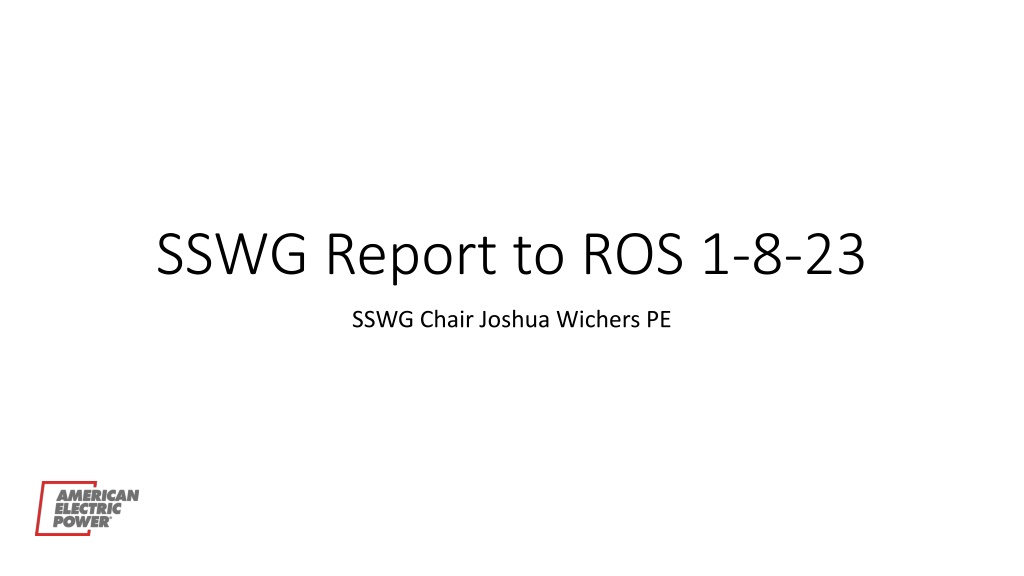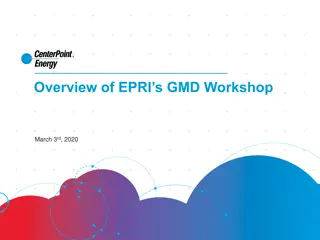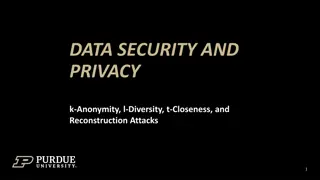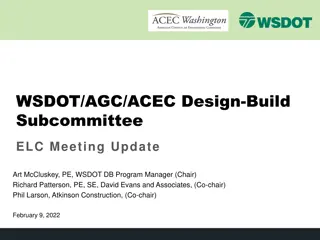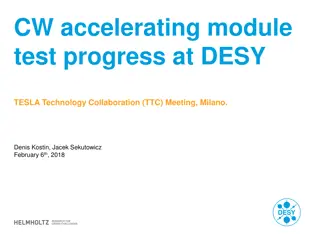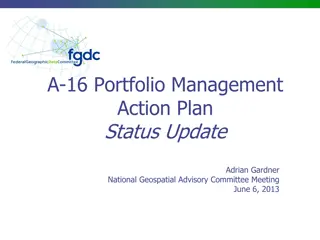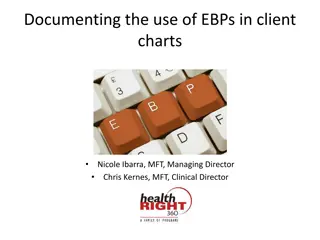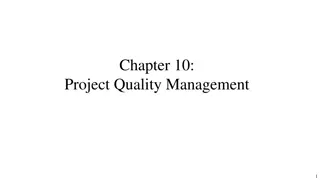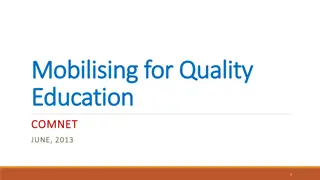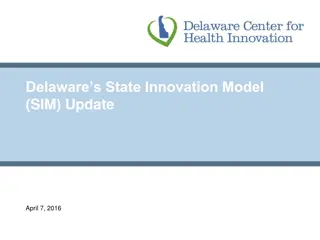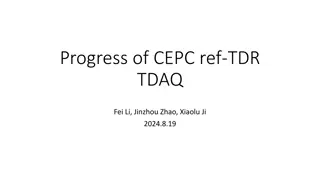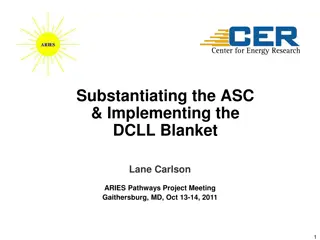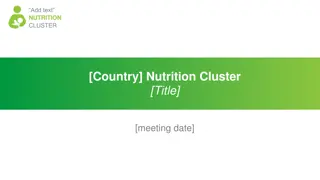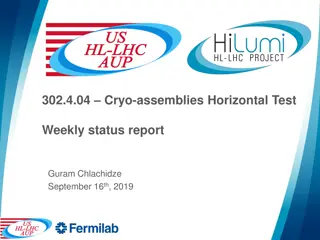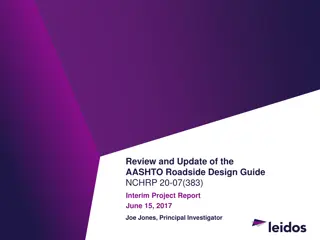Progress Update on GIC Model Build and Case Quality Discussions
The GIC model build progress is positive with active participation, focusing on involving all TSPs. Discussions highlighted accurate representation of projects and upcoming TPIT posting expectations. Updates on PGRRs and PM discussions were shared. Case Quality discussions led to a tier labeling system for posted cases, enhancing consistency and quality. Further details on tier classifications are to be discussed. Additional notes on extraordinary dispatch conditions were provided.
Download Presentation

Please find below an Image/Link to download the presentation.
The content on the website is provided AS IS for your information and personal use only. It may not be sold, licensed, or shared on other websites without obtaining consent from the author. Download presentation by click this link. If you encounter any issues during the download, it is possible that the publisher has removed the file from their server.
E N D
Presentation Transcript
SSWG Report to ROS 1-8-23 SSWG Chair Joshua Wichers PE
The GIC model build is proceeding well with good participation except from a few TSPs. Those have been identified and we are working on getting them involved. We discussed the expectations surrounding the January TPIT posting which is expected on 1/26/23. Accurate representation of In-Service projects was a focal point of our discussion. The 24SSWG Case will be our first NB (Node Breaker) case posting. Evan with ERCOT NMM has been responsive and assisting the TSPs with updating our NMMS modeling for this new endeavor. It has been very beneficial and should help us in this effort. PGRR 106 has ERCOT comments posted after our last SSWG meeting, it is on the agenda for this week s meeting. PGRR 113, I received a note from ONCOR that it was on hold with PLWG pending WG feedback. We have some PM updates that are being discussed and those should be available for discussion at the February ROS meeting. They are on the agenda for our meeting this week. We have continued Case Quality discussions and have arrived at a Tier labeling that is expected to be provided with the posted cases. This effort is helping to focus the expectations as well as TSP and ERCOT efforts contributing to a more consistent and better quality posted case. The details still need to be discussed and updated but we feel that the high-level tiers will provide a good basis for expanding the definitions. The Tiers were developed in a way that only posted cases are considered and previously posted cases could be classified as a way to track the quality of the posted cases.
Case Tier Title of Target Threshold Column1 Comments Report Violations per Case Tier 1 Run voltage violation report on N-1 anaylsis Full newton solving PSSE case 1 MINIMUM CASE POSTING REQUIRED Tier 2 Full newton solving PSSE case 5 Fixed-slope for multiple consecutive solutions Only to a certain point of ED? How to account for ignored contingencies? PSSE Contingency Run Legend for the denominator. Should we just run all external contingencies and let PSSE ignore invalids. Ideally 100% at least Tier 2 for *all* cases N-1 convergent (P1, P2.1 & P7) Slack/ Swing bus within Real and Reactive Capabilities 99% Tier 3 Fixed-slope or Full Newton Solving PSSE Case Run N-1 contingencies (Will allow contingencies to be run Yes/ No) Automatic or do the previous contingency definitions need to be included? Report Violations per Case Run voltage violation report on P0 case (Yes/No) Run thermal overload report on P0 case (Yes/No) Tier 4 Zero islands CNTB errors minimized Iterating PSSE case No split buses No series inconsistencies 0 10 Define this case on detailed list with load and gen balance 0 0 Tier 5 Case Blows Up Islands exist Case with solution not attempted Split buses exist Series inconsistencies exist
4.3.3.1 Extraordinary Dispatch Conditions On occasion, the total load plus the spinning reserve indicated above can exceed the amount of available generation due to load forecasts. SSWG Cases typically model load at individual coincident TSP peaks instead of at the ERCOT coincident system peak. When such a condition is encountered in future cases, ERCOT may increase generation resources by taking the indicated action, or adding generation, in the following order: 1. 2. 3. 4. Ignore spinning reserve. Increase NOIE generation with prior NOIE consent. DC ties dispatched to increase transfers into ERCOT to the full capacity of the DC ties. Units that have changed their status to mothballed units within the last 18 months and that have not announced their return to service. The dispatch methodology for this procedure is detailed below. Scale transmission level wind generation dispatch up to 50% of capability. Add units with interconnection agreements, but do not meet all of the requirements for inclusion defined in the Planning Guide. Units that have changed their status to mothballed over 18 months ago and have not announced their return to service. The dispatch methodology for this procedure is detailed below. Add publicly announced plants without interconnection agreements. Dispatch SODG natural gas and diesel units up to their full capacity. 10. Dispatch units that are solely for black start. 11. Scale wind generation dispatch up to 100% of capability 12. Add generation resources to the 345 kV transmission system near the sites of existing or retired units. 5. 6. 7. 8. 9. ERCOT shall post the extraordinary dispatch details used in each case to the MIS website. We started discussing re-organization of the Extraordinaire Dispatch steps and utilizing new tools and equipment that are available in the case. TSP consensus was that we would like some ERCOT input prior to submitting any PM updates. Since TSPs are not currently part of the generation and ED process what appears to us as an easy change may not be for ERCOT so we are wanting to account for the complexity.
